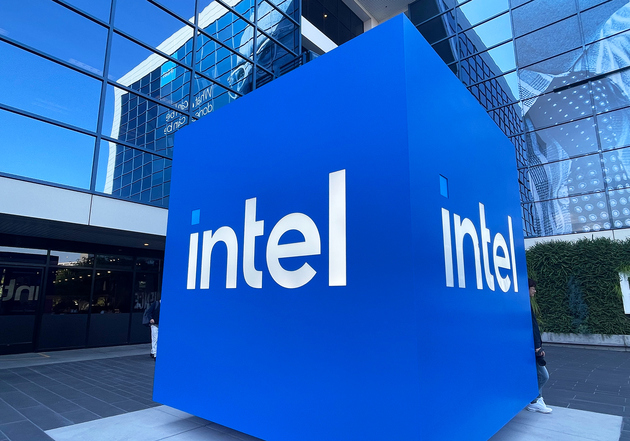
Photo/Zheng Yuhang (NBD)
Intel released its latest artificial intelligence (AI) chip, Gaudi 3, on April 9, local time. It is expected to be widely available in the third quarter.
At the Intel Vision 2024 conference held on the same day, Intel claimed that the Gaudi 3 accelerator delivers "50% on average better inference and 40% on average better power efficiency" than Nvidia's H100, and the speed of running AI models is 1.5 times that of the H100. Additionally, Gaudi 3 is up to 1.5 times faster than Nvidia's H100 for inferencing applications, Intel says, "The product will be roughly equal with Nvidia's newer H200, performing slightly better in some areas and a bit behind in others."
Intel tested the chip on models like Meta, open-source Llama and Abu Dhabi-supported Falcon. The company said the new Gaudi 3 can help train or deploy models, including stable diffusion or OpenAI's speech recognition Whisper model. Intel said its chips consume less power than Nvidia's.
Intel says its chips use less power than Nvidia's. Intel said that the new Gaudi 3 chips would be available to customers in the third quarter, and companies including Dell, HP and Supermicro will build systems with the chips. Intel didn't provide a price range for Gaudi 3.
“We do expect it to be highly competitive” with Nvidia's latest chips, said Das Kamhout, vice president of Xeon software at Intel, on a call with reporters. “From our competitive pricing, our distinctive open integrated network on chip, we're using industry-standard Ethernet. We believe it's a strong offering.”
Sachin Katti, senior vice president of Intel's Network Group, said on a conference call, "We're working with the software ecosystem to build open reference software, as well as building blocks, so you can stitch together the solution you need, rather than being forced to buy a solution."
According to Intel, Gaudi 3 is manufactured using a 5-nanometer process, which is a relatively new manufacturing technology, indicating that the company is using an external foundry to produce the chips. In addition to designing the Gaudi 3, Intel also plans to build a new AI chip factory in Ohio, which is expected to come online in 2027 or 2028.
However, challenging Nvidia is by no means easy. According to statistics, Nvidia currently occupies 80% of the AI chip market, which can be said to be a monopoly. Over the past year, the company's GPUs have been the preferred high-end chips for AI manufacturers.
In addition to the Gaudi 3 accelerator, Intel also released another hardware: the sixth-generation Xeon processor. It offers a high-performance solution to run current generative AI solutions, including RAG. It will be available to all enterprise AI in the second quarter of this year.
Intel said that compared to the second-generation Intel Xeon processor, the sixth-generation Xeon processor with E-core code-named Sierra Forest has four times the performance per watt and 2.7 times the rack density.
The sixth-generation Xeon processor with P-core code-named Granite Rapids includes software support for the MXFP4 data format, which can reduce the next token latency by up to 6.5 times compared to the fourth-generation Xeon processor using FP16, and can run a 70-billion-parameter Llama-2 model.
As of the close of trading on April 9, local time, Intel closed at $38.33, up 0.92%, with a market value of $163.17 billion.


 川公网安备 51019002001991号
川公网安备 51019002001991号





